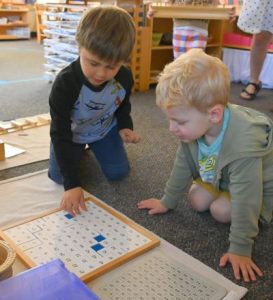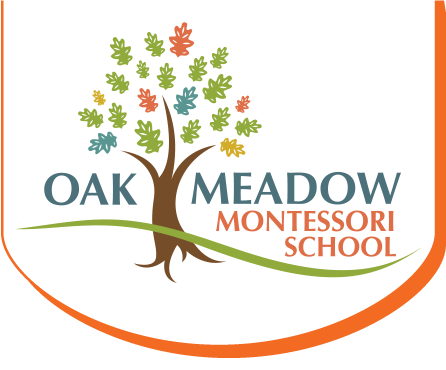 Step into any classroom at Oak Meadow, and right away you’ll notice a significant differentiator — our Montessori multi-age classrooms. Parents often ask me, “why does the school put younger and older students together, in two- or three-year groupings?” I’ve spent most of my career in schools with single-grade classrooms, so I really appreciate the advantage of a multi-age classroom approach. Here are the benefits I see: improved academic outcomes, more self-motivation and personal well-being; meaningful opportunities to work in collaboration with peers; developing skills in listening and empathy; and becoming effective team members.
Step into any classroom at Oak Meadow, and right away you’ll notice a significant differentiator — our Montessori multi-age classrooms. Parents often ask me, “why does the school put younger and older students together, in two- or three-year groupings?” I’ve spent most of my career in schools with single-grade classrooms, so I really appreciate the advantage of a multi-age classroom approach. Here are the benefits I see: improved academic outcomes, more self-motivation and personal well-being; meaningful opportunities to work in collaboration with peers; developing skills in listening and empathy; and becoming effective team members.
 Scientific research shows that students do better when they can work at the front edge of their own expanding capabilities, and not be limited to the same learning pace as every other student. The goal is mastery, and a multi-age classroom facilitates learning by adjusting to the child’s pace. Scientific research shows that students benefit significantly when they can observe students working just ahead of their own level of mastery. Students can see examples of what they might be able to do next as they keep learning and growing. Scientific research shows that the best learning happens in an environment where less experienced apprentices work with more experienced mentors. Younger students learn from their mentors, and mentors grow too by explaining what they know to younger students. Scientific research shows that students do better at school when they can stay with one teacher for three years, giving the teacher the opportunity to really know the student.
Scientific research shows that students do better when they can work at the front edge of their own expanding capabilities, and not be limited to the same learning pace as every other student. The goal is mastery, and a multi-age classroom facilitates learning by adjusting to the child’s pace. Scientific research shows that students benefit significantly when they can observe students working just ahead of their own level of mastery. Students can see examples of what they might be able to do next as they keep learning and growing. Scientific research shows that the best learning happens in an environment where less experienced apprentices work with more experienced mentors. Younger students learn from their mentors, and mentors grow too by explaining what they know to younger students. Scientific research shows that students do better at school when they can stay with one teacher for three years, giving the teacher the opportunity to really know the student.
There is growing interest in multi-age learning in schools nationwide, and Montessori is leading this charge. It’s a model with proven benefits for all students.





